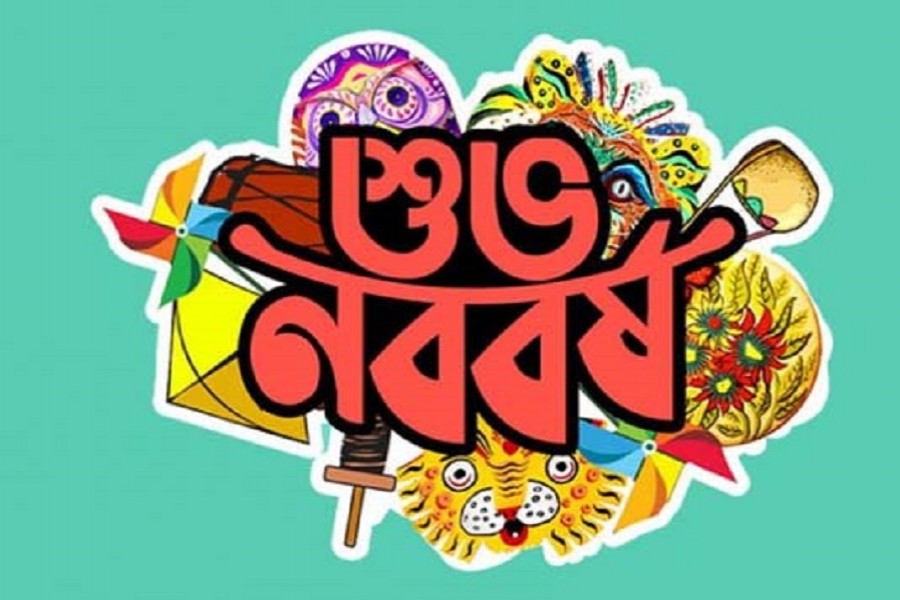
Published :
Updated :

In Dhaka, Pohela Boishakh does not just occur; it erupts. As April 14's first light breaks over the sky, the streets of Dhaka come alive in colorful vigor. Red-and-white-clad throngs form, their chant-filled voices meshing in sweet harmony as they sing "Eso He Boishakh while the procession floats through the city streets, a living mosaic of masks, floats, and effervescent jubilation.
It is a day filled with song, family, food, and the rich flavors of cultural pride. It is a day with a shared sense of identity, a new beginning grounded in centuries of tradition.
Yet, across the ocean, in bustling cities such as New York, the Bengali New Year assumes a different character—one that is quieter, more adaptable, yet equally significant for those who continue to hold the festival dear to their hearts.
For Bangladeshi student Jubayer Hossain, based in New York City, Pohela Boishakh is melancholy. The intensity of the day remains even as the city stays in step, seemingly none the wiser.
"Typically, it's just a regular day for us," he states. "There is no official holiday here, so we are either in class or working."
Nevertheless, the people are determined not to let the day pass without notice. Elsewhere in New York—in student lounges, community centers, and rented halls—the festivities persist.
Jubayer divulges that a big procession, similar to Anondo Shobhajatra, takes place in Times Square. "It's not the same size as the one at home, of course, but the mood is similar—there are stalls, people sitting around, enjoying panta bhaat and ilish fish—things like that."
Amidst one of the world's most densely populated cities, Bengali culture makes its presence felt, if only for a short while. Hand-painted masks, children's laughter, and the pounding beat of the dhol establish a temporary connection between Bangladesh and its diaspora.
Student halls as arenas of culture
For millions of Bengali youngsters overseas, college has become the most reliable space for cultural festivities. University organisations turn into cultural embassies, where festivals such as Boishakh are redefined by those who miss home the most.
These events usually do not coincide precisely with April 14, a practical accommodation to permit the limitations of school calendars and working schedules.
The date's malleability alters the logistics but not the sentiment. For many, these celebrations are held a handful of times a year, and they celebrate their Bengali heritage in sound and color.
Tradition in translation
In New York, some families prepare ilish and rice in their homes for eating with close friends. Others gather in a rented room or a park to sing folk songs and recite poetry.
Social media is flooded with nostalgic images and messages, creating a digital community that stretches from Queens to Khulna.
Though the celebrations are scattered, the spirit remains the same: renewal, remembrance, and togetherness.
For Jubayer, even witnessing others celebrate in person or on social media triggers something inside. "I don't do anything too fancy," he says, "but seeing everyone else celebrate, even online, makes me feel part of something bigger. Even if I'm far."
That feeling, that blend of pain and comfort, is one of the diaspora's closest ties to Boishakh. It is not just tradition; it is what home is.
Boishakh beyond borders
In households around the world, April 14 may not coincide with national festivities, but it still vibrates with low-key customs.
Even if life does not pause, Bengalis abroad have their own ways of making the day special: a video call with family and friends, a home-cooked meal, and a moment of silence in which they're reminded where they came from.
For students like Jubayer, the sense of belonging is paramount. Finding individuals with similar backgrounds can make all the difference when you are away from home. Whether in a college dorm or the lights of Times Square, they give a sense of belonging that can bridge distance.
From homeland to the heartland
Pohela Boishakh might look slightly different in Queens than in Dhaka, but the sentiment is the same. For people who are distant from home, that act of remembrance is powerful. Ultimately, Boishakh is more than parades and panta ilish. It is a connection. The deep sense of belonging is re-created, perpetuated, and happily celebrated even within foreign cities and their strange skies.
Bengalis like Jubayer nurture that sentiment for themselves and future generations every year where they are based. Once experienced, the resonance of Boishakh never truly fades away; it merely discovers new pathways to return home.


 For all latest news, follow The Financial Express Google News channel.
For all latest news, follow The Financial Express Google News channel.